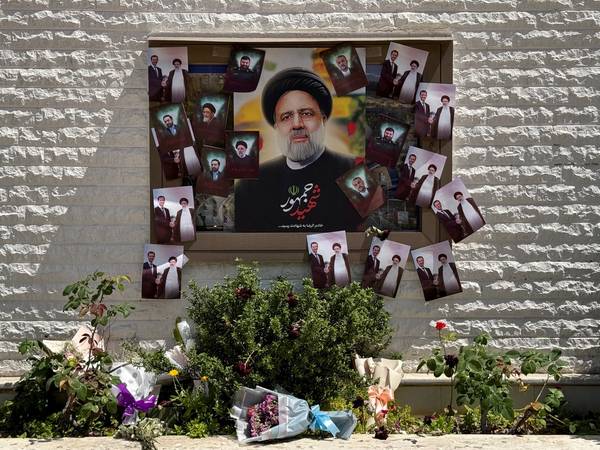The first official report on the helicopter crash that killed Iran’s late President Ebrahim Raisi was published on Thursday. However, it did little to quell speculations surrounding the fatal incident.
Raisi was on a short flight back from the neighboring Republic of Azerbaijan last Sunday, when his helicopter went missing from radars. The crash site was located several hours later, along with bodies of Raisi and his minister for foreign affairs, Hossein Amir-Abdollahian.
Speculations, often conspiratorial in nature, mushroomed immediately after the news of the crash, long before Raisi and other officials were confirmed dead. More conjecture emerged in the following hours and days, mostly pointing fingers at Mojtaba Khamenei, the Supreme Leader’s eldest son who is widely believed to be the main contender to replace his father.
On Thursday evening local time, Iran’s general staff of the Armed Forces published a brief statement (with 6 articles) to present its ‘early’ finding and dissuade people from speculation.
“Some actions require more time for a definitive opinion...while some issues can be stated with certainty and are mentioned here,” the statement read, “no evidence of bullet impact or similar instances was observed in the remaining parts of the crashed helicopter…The crashed helicopter caught fire after hitting an altitude.”
This was perhaps the most significant part of the statement, attempting to convince the public that there was no outside attack or interference. It followed another broad remark conveying the same message: “The helicopter continued its pre-planned route and did not deviate from the designated flight path,” implying that the crash was indeed an accident, but offering no reasons for it –a technical problem, for instance, or human error.
The statement was met with skepticism or mockery. Lack of detail, or a rough storyline, at least, raised many more questions that it answered.
“The statement does not address any of the uncertainties surrounding the crash of Raisi’s helicopter,” Iranian journalist and commentator Jamshid Barzegar told Iran International. “All it does is to rid [Iran’s] armed forces of the little credibility that they had, [especially if] you put it alongside the staggering lack of coordination that was displayed at Raisi’s funeral.”
This sentiment was echoed by other analysts and some ordinary Iranians on social media, who judged the statement from ‘not much to offer’ to ‘all lies’, even though it stated clearly that large amounts of evidence had been gathered but “more time is needed to examine some parts and documents.”
Further statements, even with more evidence and detail, are likely to fail to convince ordinary Iranians, many of whom find it hard to trust official announcements –and are often actively looking for inconsistencies or ‘gaffes’ that would discredit the narrative.
This is partly at least due to the Islamic Republic’s long history of deceit which has all but completely eroded trust between the people and the state. And partly a backlash to the regime’s persistent dissemination of its own message and violent suppression of alternative ideas.
One such instance was the downing of a Ukrainian airliner in January 2020, when two missiles fired by the Revolutionary Guard air defense units around Tehran brought down the plane with 176 people on board. All perished in the crash. For three days, military and security officials denied any involvement and argued that it was a technical accident, until videos emerged showing the missiles hitting the plane.
“People are asked to ignore non-expert opinions based on speculations without accurate knowledge of the realities of the scene, or sometimes guided by foreign media in cyberspace and other platforms,” the statement concluded.
